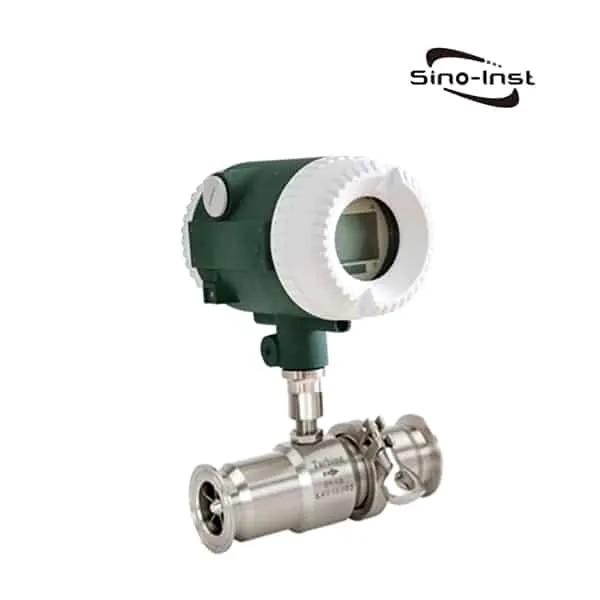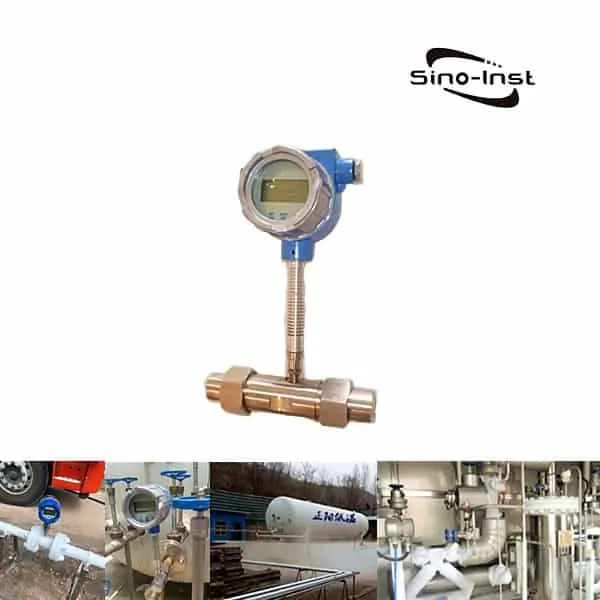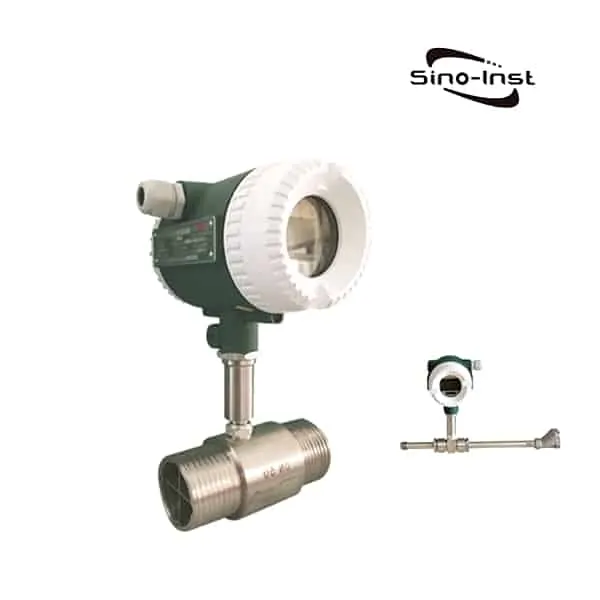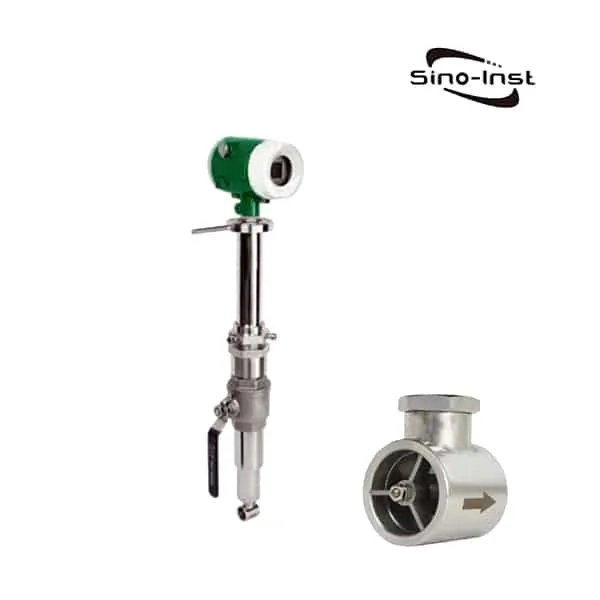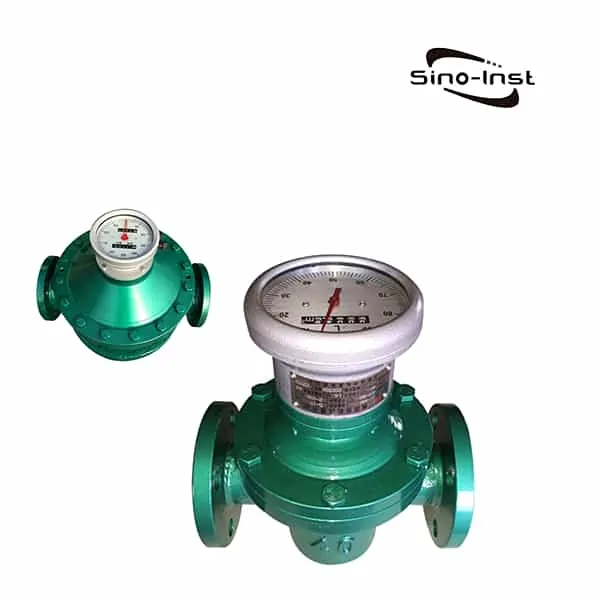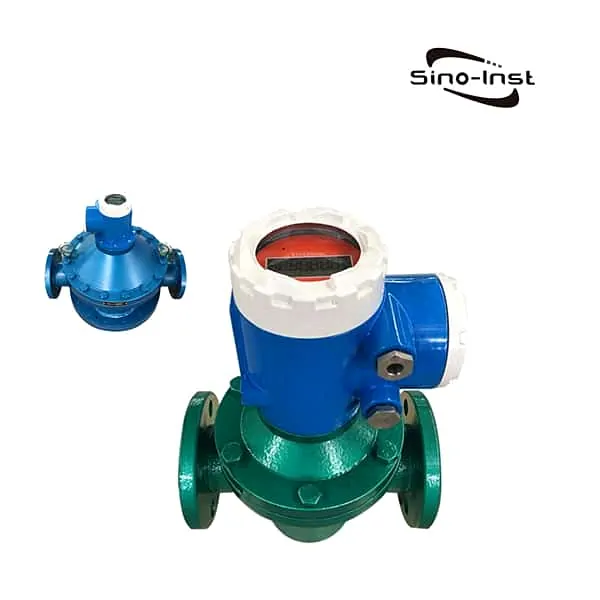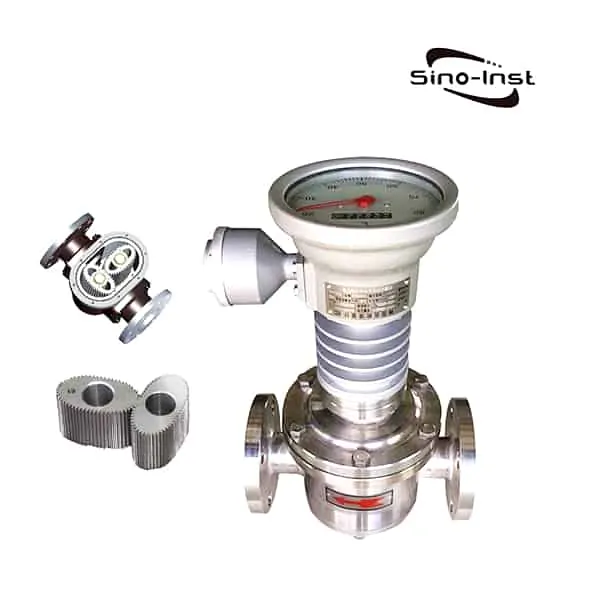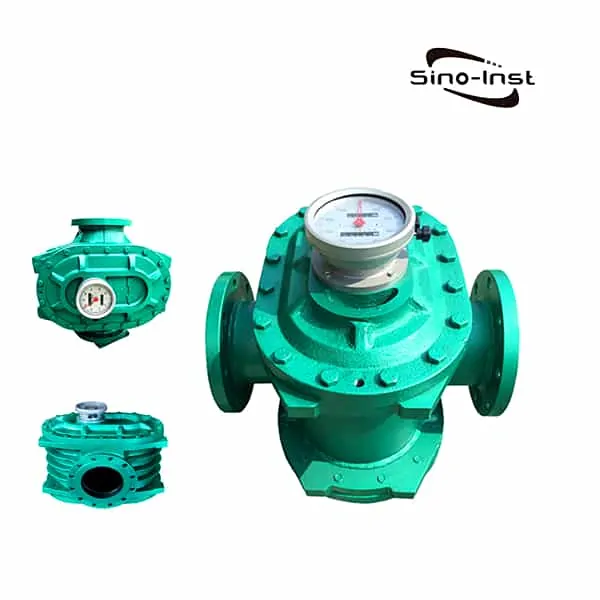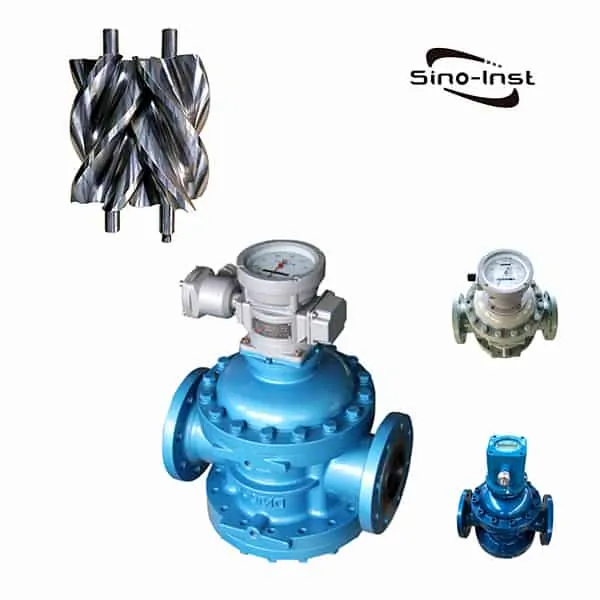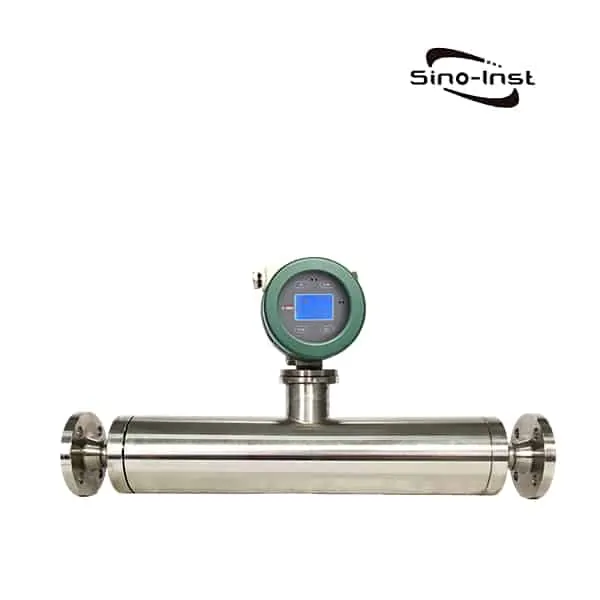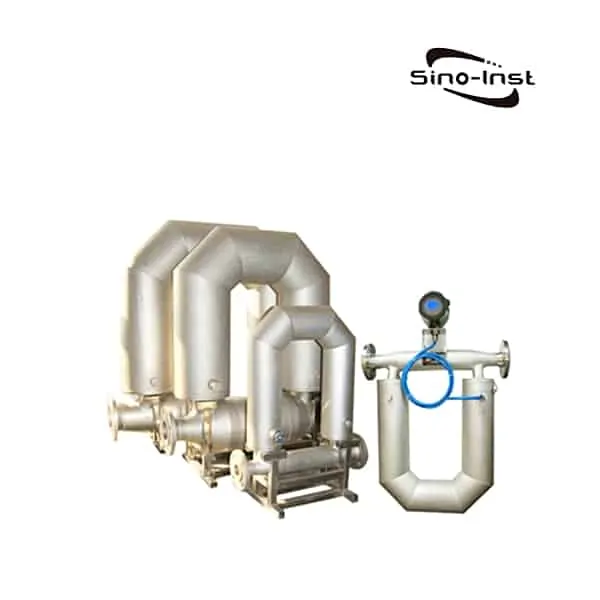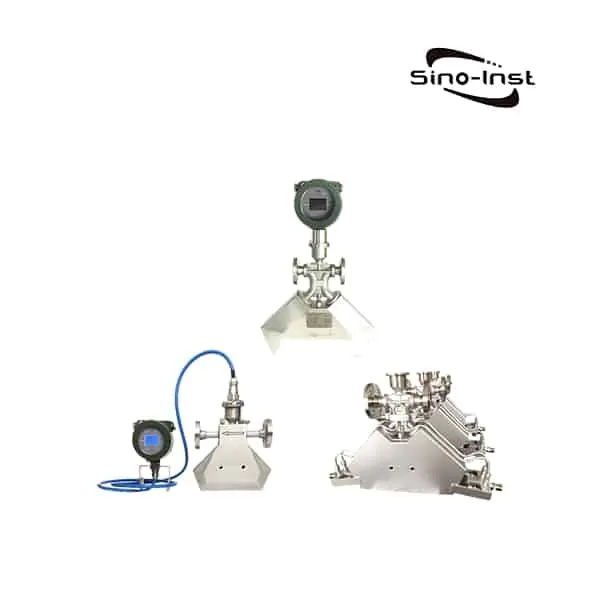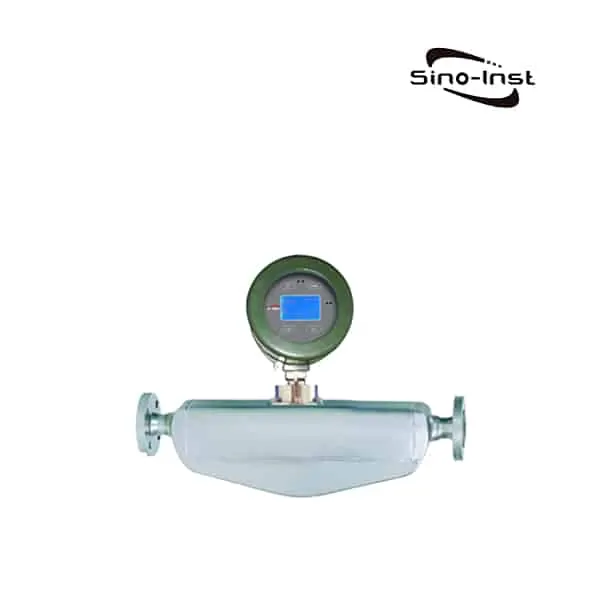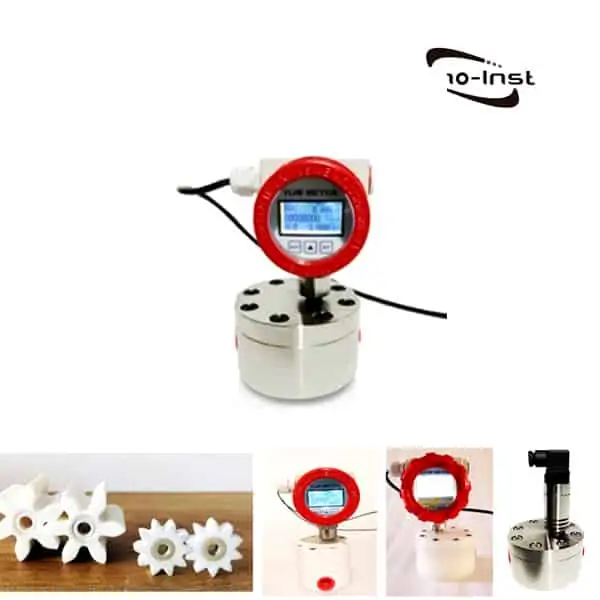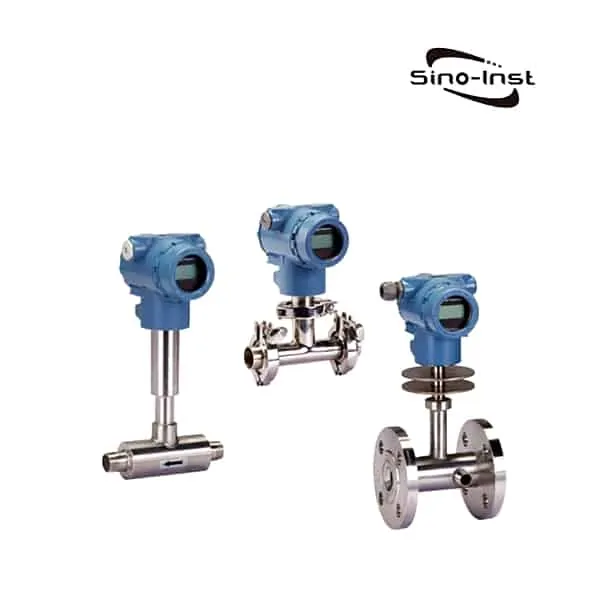Inline oil flow meters play a vital role in various industries by accurately measuring the volume of oil passing through the meter. Ensure safe plant operations and provide valuable monitoring information on oil usage and production.
Inline oil flow meters designed to cater to a diverse range of oil types, from thick lubrication oil, viscous heavy oil, fuel oil, heating oil, and engine oil to food-grade oils like sunflower and olive, inline flow meters are installed directly into the pipeline.

Types of Inline Oil Flow Meters
The flowmeters commonly used to measure oil mainly include the following categories:
- Turbine Oil Flow Meters
- Positive Displacement Oil Flow Meters
- Coriolis Oil Flow Meters
- Gear Oil Flow Meters
- Target Flow Meters
Turbine Oil Flow Meters
Turbine flow meters are one of the most common types of inline oil flow meters used for measuring the flow of liquids, including oil. These meters consist of a turbine wheel mounted on bearings within a flow tube. As the oil flows through the tube, it causes the turbine wheel to rotate. The rotation speed is proportional to the flow velocity, which can be measured by a sensor and converted into volumetric flow rate.
Advantages:
- High accuracy (typically within ±0.5% to ±1%)
- Wide flow range
- Fast response time
- Suitable for clean, low-viscosity liquids
Disadvantages:
- Not ideal for high-viscosity fluids or fluids with suspended particles
- Requires regular maintenance to ensure accuracy
Our Recommended Turbine Oil Flow Meters:
Positive Displacement Oil Flow Meters
Positive displacement (PD) flow meters, also known as volumetric flow meters, are designed to measure the flow rate by capturing a specific volume of fluid and counting the number of times this volume is displaced. These meters are suitable for a wide range of fluid types, including oils with varying viscosities. Common types of PD flow meters include oscillating piston, rotary vane, and gear meters.
Advantages:
- High accuracy (±0.1% to ±0.5%)
- Suitable for a wide range of fluid viscosities (especially high viscosity oils)
- Low flow rate capability
Disadvantages:
- Potential for mechanical wear due to moving parts
- May require more frequent maintenance than other meter types
Our Recommended Positive Displacement Oil Flow Meters:
Coriolis Oil Flow Meters
Coriolis flow meters measure the mass flow rate of fluids, making them ideal for applications where mass measurement is critical, such as custody transfer and chemical mixing. These meters utilize the Coriolis effect, which causes the fluid to exert a force on a vibrating tube, resulting in a measurable phase shift. The mass flow rate can be calculated by analyzing this phase shift.
Advantages:
- Direct mass flow measurement
- High accuracy (±0.1% to ±0.2%)
- Suitable for a wide range of fluid viscosities and densities
- No moving parts, resulting in low maintenance requirements
Disadvantages:
- Higher initial cost compared to other meter types
- Sensitive to external vibrations and temperature fluctuations
Our Recommended Coriolis Oil Flow Meters:
Gear Oil Flow Meters
Gear oil flow meters use a pair of intermeshing gears to measure the flow rate of oil. As the oil flows through the meter, it causes the gears to rotate, and the number of rotations can be used to calculate the flow rate. Gear flow meters Gear flow meters are suitable for a wide range of fluid viscosities, making them versatile and effective for various oil types.
Advantages:
- High accuracy (±0.5% to ±1%)
- Capable of handling high-viscosity fluids
- Low pressure drop
- Suitable for bidirectional flow measurement
Disadvantages:
- Moving parts can lead to mechanical wear and increased maintenance
- Not ideal for fluids with suspended particles
Our Recommended Gear Oil Flow Meter:
Target Flow Meters
Target flow meters, also known as drag force flow meters or solid-state flow meters, measure the flow rate of fluids, including oils, by detecting the drag force exerted on a target or sensor placed in the flow stream. The force exerted on the target is directly proportional to the flow rate, allowing for accurate flow rate calculations. Target flow meters can be said to be Inline Oil Flow Meters specially designed to deal with extreme working conditions. Target flow meters are suitable for a wide range of fluid types and can handle varying viscosities and densities.
Advantages:
- High accuracy (±0.5% to ±1% of reading)
- Suitable for high-viscosity fluids
- No moving parts, resulting in low maintenance requirements
- Capable of handling dirty or corrosive fluids
- Resistant to wear and tear
Disadvantages:
- Can cause a pressure drop due to the target obstruction in the flow stream
- Sensitive to changes in fluid properties, such as viscosity and density
- May require periodic cleaning of the target to maintain accuracy
Our Recommended Target Flow Meters:
Factors to consider when choosing inline oil flow meters
When choosing an inline oil flow meter for your specific application, it’s crucial to consider several factors to ensure accurate and efficient flow measurement. Here are some essential factors to take into account:
Type of oil: Different inline oil flow meters are designed for specific oil types and viscosities. Such as thick lubrication oil, viscous heavy oil, fuel oil, heating oil, engine oil, and food-grade oils like sunflower and olive.
Flow range: The flow range of your application is another crucial factor when selecting an inline oil flow meter.
Accuracy: Flow measurement accuracy is vital for process control, monitoring, and billing purposes.
Pressure and temperature: Ensure that the flow meter you choose can handle the pressure and temperature ranges of your application without compromising accuracy or reliability.
Installation and maintenance: Consider the ease of installation and maintenance when selecting an inline oil flow meter.
Cost: The initial cost and ongoing maintenance costs of your inline oil flow meter should also be considered when making your decision. Although a lower-cost option may be tempting, it’s crucial to evaluate the long-term value and reliability of the meter, as well as the potential savings in terms of reduced maintenance and improved process efficiency.
Compatibility with existing systems: Ensure that the inline oil flow meter you choose is compatible with your existing process control and monitoring systems. This will allow for seamless integration and smooth operation.
By carefully considering these factors, you can make an informed decision when selecting the ideal inline oil flow meter for your specific application, ensuring accurate and efficient flow measurement.
FAQ
More Flow Measurement Solutions
Condensate Flow Meter-Steam Condensate Flow Meter|Types & Selection Guide
Air Flow Measurement Instruments for Industrial Harsh Conditions
Flow Measurement Units-What Is GPM in Flow Meter?
Top Flow Meters for PVC Pipes: Find Your Ideal Match
Shop Pipe Flow Meters for Liquid and Gas 101
The Pros and Cons of Micro Motion Flow Transmitters
Choosing the right inline oil flow meter is crucial for ensuring accurate and efficient flow measurement in various industries. By understanding the different types of inline oil flow meters, their working principles, and advantages and disadvantages, you can make an informed decision that best suits your specific needs.
At Sino-Inst, we are an experienced manufacturer and supplier of inline oil flow meters, offering a wide range of products that cater to diverse applications and requirements. Our team of experts is available to provide support, advice, and customization services to help you find the ideal flow meter solution for your needs. Don’t hesitate to contact us to discuss your flow measurement requirements and explore our product offerings.
Request a Quote

Wu Peng, born in 1980, is a highly respected and accomplished male engineer with extensive experience in the field of automation. With over 20 years of industry experience, Wu has made significant contributions to both academia and engineering projects.
Throughout his career, Wu Peng has participated in numerous national and international engineering projects. Some of his most notable projects include the development of an intelligent control system for oil refineries, the design of a cutting-edge distributed control system for petrochemical plants, and the optimization of control algorithms for natural gas pipelines.


